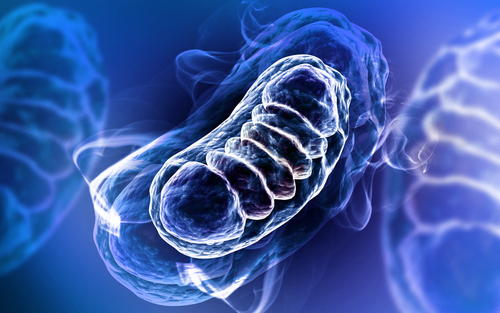FAQs About Mitochondrial Disease

Mitochondrial disease is a rare genetic disorder in which mitochondria cannot produce enough energy for a cell to work as it should.
What are mitochondria?
Mitochondria are small compartments that exist within most types of cells. These compartments have an important job: producing energy for the cell. Without these compartments, cells have trouble doing their jobs.
Cells like red blood cells have no mitochondria, while cells like muscle and heart cells have a lot of mitochondria since they have high energy requirements.
What is mitochondrial disease?
In mitochondrial disease, the mitochondria are unable to function as they should. This can lead to a wide range of symptoms, from fatigue and cramps to mental and physical developmental delays, in patients.
Mitochondrial disease can affect every system in the body, and can range in severity from very mild to extremely severe. There are more than 20 types of mitochondrial disease that doctors currently recognize, and it’s likely many more exist that researchers haven’t yet identified.
Each type of mitochondrial disease has different symptoms, inheritance patterns, and potential treatments.
Who gets mitochondrial disease?
Because mitochondrial disease is so rare, it’s hard to say how many people it affects worldwide. However, it affects all ethnic groups, both men and women, and both children and adults.
What causes mitochondrial disease?
Mutations in genes that encode for important proteins in mitochondria can cause mitochondrial disease. These genes can reside in the cells nucleus (which houses most of the DNA in a cell), or in the mitochondrial genome (a “mini-genome” within the mitochondria that encodes for 37 genes).
There are hundreds of genes that contribute to the function of mitochondria. A mutation in even one of these can potentially cause disease.
How is mitochondrial disease inherited?
Depending on its type, mitochondrial disease can be inherited in a recessive or dominant pattern. In recessive inheritance, a child must inherit two copies of a disease-causing mutation (one from each parent) to develop the disease. In dominant inheritance, also called autosomal dominant, a single copy of a disease-causing mutation (one from either parent) can cause the disease.
The mitochondrial genome is exclusively inherited from the mother. In other words, every mitochondrion that a child inherits comes from their mother. Because mitochondria have a mini-genome of their own, if a disease-causing mutation is present in one of these genes, the child can inherit the disease.
How do doctors diagnose mitochondrial disease?
It’s very challenging to diagnose mitochondrial disease. Generally, doctors need to run many tests before confirming a diagnosis. These might include blood tests, muscle tests (such as strength and endurance tests, as well as muscle biopsies), nerve tests, spinal taps, and urine analysis, to name a few.
If doctors suspect mitochondrial disease, they can order a genetic test to check for mutations in genes that they know can cause mitochondrial disease.
How do doctors treat mitochondrial disease?
There are some treatments for some types of mitochondrial disease. For some people, changes in diet and exercise are sufficient to manage symptoms and improve their quality of life. Others require medication. Some types of mitochondrial disease currently have no treatments.
Last updated: April 14, 2020
***
Mitochondrial Disease News is strictly a news and information website about the disease. It does not provide medical advice, diagnosis, or treatment. This content is not intended to be a substitute for professional medical advice, diagnosis, or treatment. Always seek the advice of your physician or other qualified health provider with any questions you may have regarding a medical condition. Never disregard professional medical advice or delay in seeking it because of something you have read on this website.






